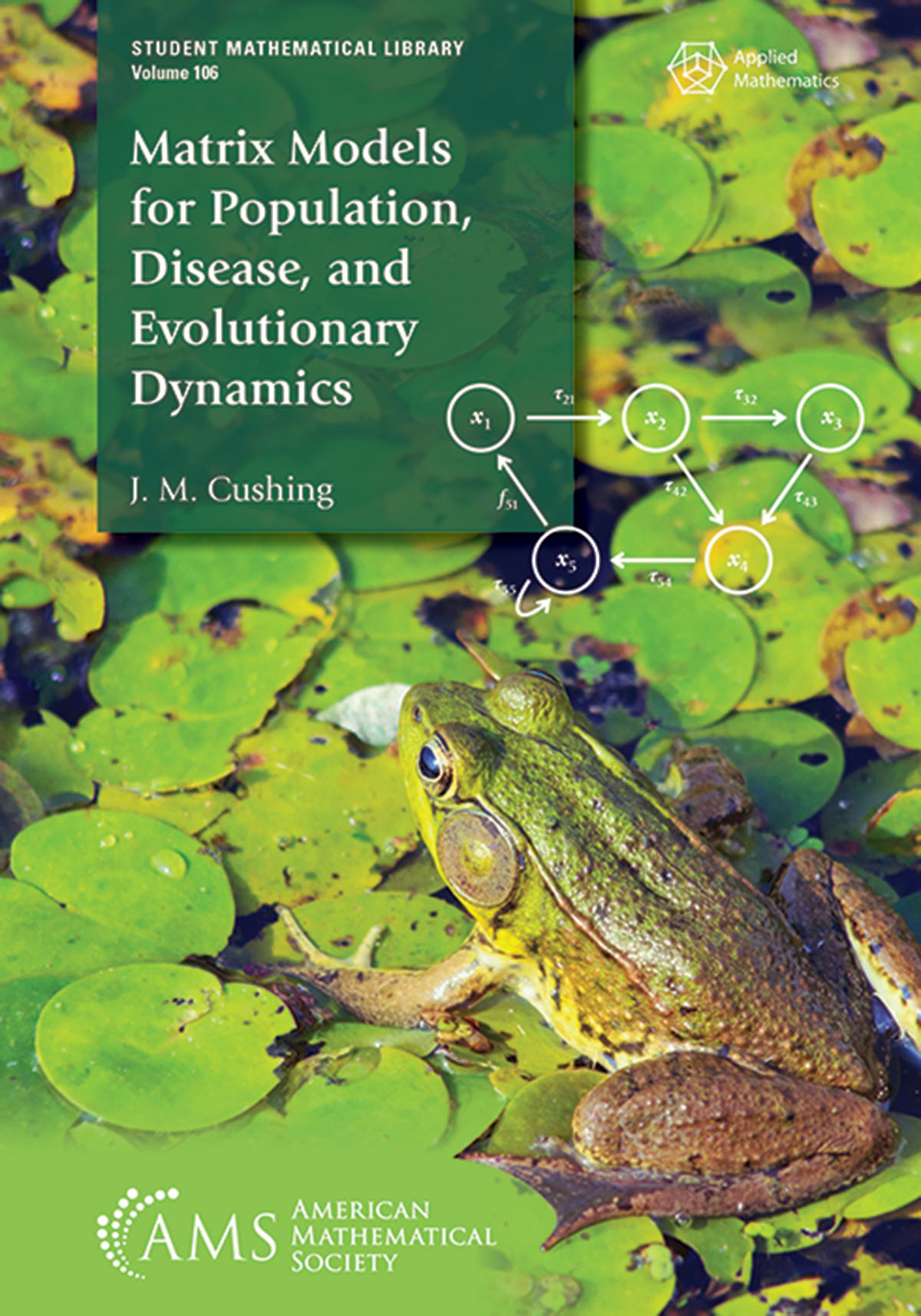
- Author: J. M. Cushing
- Series: AMS Student Mathematical Library series
- Publisher: American Mathematical Society
- Publication Date: 02/29/2024
- Number of Pages: 274
- Format: Paperback
- Price: $59.00
- ISBN: 978-1-4704-7334-1
- Category: gen
[Reviewed by Bill Satzer, on 11/13/2024]
This volume in the AMS Student Mathematical Library series develops and explores models of population dynamics that use linear algebra and matrix theory. It does so in considerable detail, but required background for the reader is not extensive. First courses in multidimensional calculus and linear algebra or matrix theory would be sufficient. Some more advanced linear algebra comes into play, but it is developed as needed. (This is primarily Perron-Frobenius theory for the eigenvalues of non-negative matrices.)
Because the subject is population dynamics, concepts from dynamical systems also have an important part. But the text is self-contained in this respect and includes treatment of all the necessary dynamical systems background.
The book focuses on the basics of modeling methods. These include using biological information to set up matrix models and applying the concepts and techniques of discrete time dynamical systems. Throughout the emphasis is on the asymptotic dynamics that determine the long-term consequences for biological populations.
The first chapters – roughly half the book – establish the fundamentals of the modeling methods and analysis of the model equations. The author begins with linear and nonlinear difference equations and then develops the modeling approach for structured populations – first for linear matrix models, then for nonlinear matrix models. The critical concepts of equilibria, stability, and bifurcations are explored in this context. Indeed, each chapter incorporates a critical bifurcation theorem relevant to an essential extinction-survival question. Applications and exercises are interspersed throughout.
The last two chapters offer two broad categories of examples for further development of structured population dynamics. These include models of the spread of disease and Darwinian evolution by natural selection. These areas offer opportunities for students to explore and expand results further. Overall, this text would be a suitable resource for special topics courses, or as supplementary material for courses in mathematical biology.
This is a book dense with development, applications and results. Many theorems are stated, and a few are proved. The relatively rapid treatment and the level of sophistication are such that this is probably most suitable for advanced undergraduates or graduate students.
Throughout the book, models are developed and numerical results are examined, but the question of how models might be validated is never addressed. This is a concern because models – because they are models - can certainly fail to describe real situations. We have all seen this recently with the weaknesses of models of the Covid-19 epidemic – including the one described here.
Bill Satzer (bsatzer@gmail.com), now retired from 3M Company, spent most of his career as a mathematician working in industry on a variety of applications. He did his PhD work in dynamical systems and celestial mechanics.
